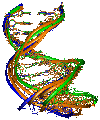Research Overview
The computational biophysics/ mathematical biology group of Professor Tamar Schlick is affiliated with the Department of Chemistry, the Courant Institute of Mathematical Sciences, the Simons Center for Computational Physical Chemistry, and the NYU-ECNC Shanghai, and is housed in the Department of Chemistry at NYU. Our postdoctoral fellows, students, and research professionals have diverse backgrounds, including mathematics, computer science, physics, chemistry, engineering, and biological disciplines.
Research Highlights:
· Biophysical Journal Special Issue on Machine Learning
· PNAS Publication about Coronavirus Frameshifting element Evolution
· Simons Center for Computational Chemistry at NYU

Our current research topics include genome organization, RNA structure and function, and DNA repair and fidelity mechanisms. To tackle these challenging problems, we are developing innovative molecular modeling, bioinformatics, and mathematical methods and collaborating on the applications with experimental groups. General issues concerning multiscale modeling and biomolecular modeling/ dynamics continue to be active areas of research.
Fundamental genome packaging and regulatory processes in eukaryotes are determined by the structure of and interactions within the chromatin fiber – the nucleoprotein complex consisting of tightly packed nucleosome units connected by linker DNAs, much like yarn wrapped around many spools. Indeed, how chromatin, and hence transcription regulation, works is ultimately a structural problem. Our long-term research goal is to integrate structural and dynamical aspects of chromatin organization to delineate the mechanisms of transcriptional regulation mediated through protein factors, epigenetic marks, and environmental conditions. Our group has developed increasingly refined mesoscale models to simulate chromatin dynamics and predict chromatin’s internal organization. We have collaborated with experimentalists to study epigenetic regulation of mouse development, cell silencing, and cancer progression. Our current research focuses on gene folding at nucleosome resolution, including the roles of chemical modifications of histone tails and remodeling proteins/ transcription factors. We are particularly interested in studying how chromatin structure is altered in diseased cells such as cancer cells, and how to develop novel therapeutic strategies for human disease through re-engineering of chromatin structure.
Recent highlights: Chromatin structural transitions triggered by linker histone density; Genome modeling: from nucleosomes to genes; and Brownian dynamics simulations of chromatin fibers.
Biological and synthetic RNAs perform a broad range of functions. Small regulatory RNAs like microRNAs, for example, can control the expression of many proteins. In addition, synthetic RNAs developed from in vitro selection – an experimental technique for identifying active RNAs from random sequence pools – have led to many ligand-binding and catalytic RNAs. These advances in RNA highlight the versatility of RNA molecules. Indeed, RNAs have been engineered for application as biosensors, therapeutic agents, and molecular tools for synthetic biology and nanotechnology. Our modeling of RNA structure and function aims to discover novel active RNA molecules via analysis, folding and design of RNA sequences and structures. In RNA analysis, our group has contributed to RNA graphical representations to describe RNA’s structural repertoire and applied bioinformatics tools to identify RNA’s tertiary interaction motifs and predict novel RNA motifs. Since 2020 we have contributed to research on the Covid-19 virus, SARS-CoV-2, by describing RNA frameshifting structural landscapes, and developing minimal mutations of the SARS-CoV-2 frameshifting element as a novel gene editing strategy against viral infection.
Recent highlight: Evolution of the coronavirus frameshifting elements.
DNA repair and fidelity mechanisms
DNA polymerases are essential for the maintenance of genome stability during DNA replication and repair. They orchestrate the addition of new nucleotides to a growing chain of DNA by catalyzing a nucleotidyl transfer reaction which increases the primer strand by one base pair. Since malfunction of DNA polymerases can lead to various cancers and premature aging, it is important to understand polymerase mechanisms at the atomic level. Our aim is to delineate both the conformational and chemical-pathway aspects in polymerase catalytic cycles for various DNA polymerase families to unravel their selectivity and fidelity properties. We have used molecular dynamics, quantum/molecular mechanics (QM/MM), and transition path sampling methods, and other novel sampling tools to elucidate the atomic-level details of how polymerases work in the cell. Our current goal is to establish the key geometric/energetic/dynamic selection criteria for polymerases using modeling and simulation protocols for large-scale, long-time conformational and chemical pathways in collaboration with experimentalists.
Our research projects are funded by:
· Mechanisms of DNA polymerases
· DNA supercoiling: local and global aspects
· Computational studies of in vitro selection of RNAs
· Computational methods for tertiary RNA folding and novel RNA design
· Exploring Covid-19 RNA Viral Targets By Graph-Theory-Based Modeling
· Mechanisms of lesion-bypassing DNA polymerase IV (Dpo4) in processing oxidative damage
Genome organization
· Biomolecular Modeling and Simulation: A Prospering Multidisciplinary Field
· Biomolecular Modeling Thrives in the Age of Technology
· Genome modeling: From chromatin fibers to genes
· Brownian Dynamics Simulations of Mesoscale Chromatin Fibers
· Chromatin transitions triggered by LH density as epigenetic regulators of the genome
RNA structure and function
· Local chromatin fiber folding represses transcription and loop extrusion in quiescent cells
· To Knot or Not to Knot: Multiple Conformations of the SARS-CoV‐2 Frameshifting RNA Element
Other
· Isabella L. Karle: A Crystallography Pioneer
· My blue whale: Seeking order in a chaotic world. An autobiographical reflection
· Eight Suggestions for Future Leaders of Science and Technology
